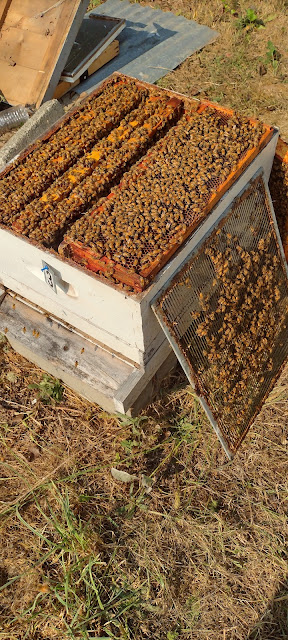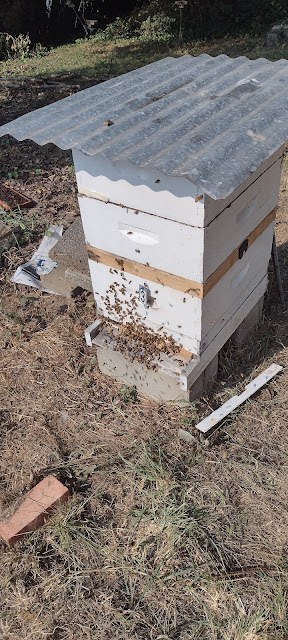Mite treatments- the best method I know
I have fought mites in massive numbers in my hives for pretty much my whole time with bees- which is just coming on 30 years. It wasn't until 15 or so years into it, that I realized it was the central, if only, problem with being a sustainable beekeeper- though I have not had to contend with diseases like EFB of AFB. But mites- I've killed at least a hundred thousand, maybe a million, and have never until recently- and that only tentatively- felt I had an effective tool to use. And I have, as many have, tried everything.
What I am about to report I have reported before- but before, it was with serious caveats and reservations. I had a method that seemed sure- using a 24 hours Formic acid "flash" treatment with handmade fumigation boards,developed in West Virginia- which I used in good faith a few years back (the report on it was awesome, even RO thought it promising), I gave it a try-and despite the promise I'd lose no queens - I lost at least 60% in Fall- all superseded in time- but all with drone queens. So- a real disaster.
The problem was queen loss- and so a few years went by- but there is really only a short list of options- and an even shorter list of legal ones. The big hitters- Apivar and MAQS, I found to be ineffective (though many of my peers used them, and some only 1x a year). I cannot explain what was different with my bees (30 to 40 hives), had I bred a more virulent mite population? Or less hygenic bees? Even now, I have no clue- except that unlike a lot of beekeepers-I looked closely, did serious autopsies, and again and again found serious infestations that a casual inspection would not have shown (which I think is why this is so under reported).
Having seen these past 5 years my hive count plunge from 40 healthy hives to less than 10, I was determined to make one last stand. And I decided to do the very obvious. Since the method I mentioned above was proven to be effective in killing in-cell mites,at levels over 90%, but dangerous to queens- I made the obvious choice: pull the queens during treatment.
Which I have done. I can't say yet whether it made a difference, time will tell. But the mechanics work great. For anyone interested, here are the steps:
Step 1.) Start by learning how to find your queens quickly. This is important, or else the method is to laborious. I suggest one always mark queens whenever one finds one (always carry a pen and marking cage), and keeping one's queen in a single brood box with an excluder. I am religious now about the Demaree method, which fits perfectly with this method, in that one keeps the queen in box #1 all through the summer (or at least,I do).
Step 2.) Decide when one should treat, and schedule it in, and stick to it. RO of course suggests mite counts to determine treatment times- but in reality- I have found these to be superfluous in that one will always find a hive that needs to be treated (post June), and then one treats everyone. Still, I do them, but not sure it makes a difference. I'd say one needs to treat (where I live) in June or early July, and possibly again in September. If only once, then late June (though I am still working on this).
Step 3.) The method is simple, though needs some preparation. One needs formic acid at 50%, Honey-B-Healthy (possibly optional, and its way to expensive), a ml measuring vessel, rags, newspaper, tape- whatever- to close off one's hives, plus wood to shut the entry down to 3" wide, and a bunch of queen cages with dowel plugs.
I just did 9 hives, all at once, but here is a single hive done a few days later. I've pulle off two supers, and the queen excluder, pulled out the center frame, which by luck (but not incommonly) had the marked queen on it, and have caged the queen. Easy to do.
In the rear I have mite board hole. I clean off the board so I can count mites the next day, and pack the opening with paper or cloth. The gas drops to the bottom, so it want's to be confined.

















Comments
Post a Comment